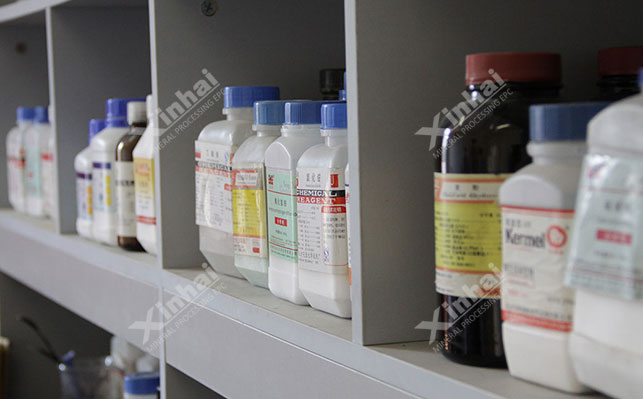
15311826613
Click to add WeChatMost of the titanium resources in nature exist in the form of ilmenite. At present, titanium metal and titanium alloy products are increasingly used due to their good performance. In order to improve the utilization rate of ilmenite resources, it is very important to choose a more scientific and reasonable beneficiation process. The following will introduce you to several commonly used ilmenite beneficiation processes.
After preliminary and further crushing, the ilmenite is passed through gravity separation equipment such as spiral chutes and shaking tables to remove a large amount of gangue minerals and sludge in the ore. This gravity separation process is mainly suitable for ilmenite with coarse-grained impregnation and fine-grained aggregate impregnation. This method can obtain a higher enrichment ratio, and the lower limit of the particle size of the recovered ore can be as low as 0.02mm. The beneficiation effect far exceeds the traditional beneficiation method.

Ilmenite is a weakly magnetic mineral and has a greater magnetization intensity under the same volume conditions. When magnetic separation is carried out, if the magnetic field strength is not enough, some useful minerals will be discarded, thereby reducing the utilization rate of minerals. Therefore, it is necessary to increase the magnetic field strength when magnetically separating ilmenite, so as to effectively separate the ore and gangue minerals and achieve the mineral separation index. Magnetic separation technology is often used for ilmenite selection. If the ore contains a large amount of impurities and sludge, after the ore is primary ground, the iron ore is first separated with a relatively weak magnetic field, and then the titanium ore is separated with a relatively strong magnetic field.

During flotation, adding appropriate reagents (such as oleic acid, oxidized paraffin soap, tall oil and new collectors) can improve the effect and efficiency of mineral processing.
Oil and soap collectors: This type of collector is widely used in mineral processing practice, and its collection effect is good, but its dosage is large.
Oxidized paraffin soap: This collector is obtained by oxidation and saponification of paraffin. This collector is widely available and affordable, and can replace oleic acid and its soaps to some extent. However, this type of collector has poor mineral processing efficiency, and the quality of the selected minerals obtained is unstable.

Tal oil is the product of the acidification of tal soap. Compared with oxidized paraffin soap, the ore quality obtained by using this type of collector is more stable, but it needs to be emulsified before use to ensure its collection effect.
New collector: Compared with conventional collectors, the new collector does not require emulsification and has good selectivity, and has better separation effect for those minerals that are more difficult to separate.
There are two main types of flocculation flotation methods: hydrophobic flocculation flotation and selective flocculation flotation.
Hydrophobic flocculation method: The interaction between hydrophobic particles in water allows these particles to attract each other and condense into agglomerates, and then the formed agglomerates are separated.
Selective flocculation method: This method mainly involves the situation where there are more than two minerals in the mixture. First, one of the minerals is condensed alone, and then gradually separated, so as to achieve effective separation of different minerals.

The agglomeration flotation technology of ilmenite first adsorbs the collector on the surface of ilmenite to make it hydrophobic. Then, the capillary force of the bridge liquid is used to cause the ore particles to aggregate. When the ore particles float up, the sorting operation is carried out. In the entire agglomeration flotation process, the intensity and strength of the stirring are crucial. They can ensure that the ore particles are easier to agglomerate, thereby achieving efficient and accurate mineral processing effects.

Carrier flotation is an advanced sorting technology. It uses particle-sized minerals with flotation ability as carriers to carry smaller ilmenite particles to float to the water surface, thereby achieving effective sorting. In the selection of fine-grained minerals, the carrier flotation method shows particularly excellent results. However, this method still faces some technical problems to be solved, so it has not yet been more widely used in practice.
The above is a simple introduction to the ilmenite beneficiation process. In actual production, it needs to be selected according to the properties of the ore and production requirements. Choosing a reasonable beneficiation method can improve the utilization rate of ilmenite resources, the grade of concentrate and the overall benefits of the beneficiation plant.